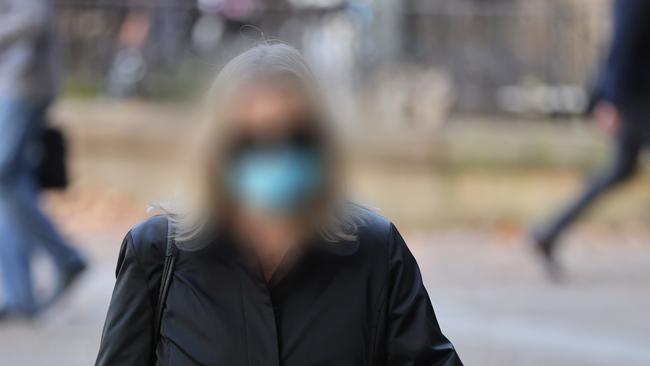The Dawson trial goes back to the future, taking a granular look at 1980 and the dance between a teacher and his pupil
The issue of time’s march forward, remembering and forgetting, and life carrying on swirled about Sydney’s Downing Centre District Court.

The great American novelist John Steinbeck once mused on the passage of time.
He said it was fine for people to say that time healed everything, that things got forgotten and life moved on, especially when those people were not involved in anything dramatic.
“ … but when you are (involved) there is no passage of time, people do not forget and you are in the middle of something that does not change.”
The issue of time’s march forward, remembering and forgetting, and life carrying on swirled about Sydney’s Downing Centre District Court LG 1 throughout yesterday, and underscored that Christopher Dawson’s carnal knowledge trial very much hinged on the question of time.
To be precise, the year 1980, when the complainant, AB, was 16 years old, and a year 11 student at Cromer High on Sydney’s northern beaches.
As the Crown began constructing its timeline of events, seemingly nebulous and forgettable moments from more than four decades ago – the exact date of AB’s driving permit being issued, the time in the calendar year when she began work as an unpaid babysitter for teacher Chris Dawson and his family, the address of his parent’s house in Maroubra where they first engaged in sexual activity, the precise room where that activity happened – were drawn back into the present.
AB – in court via audio visual link – sat in a bland white-walled room in as unknown location, and was taken through all those usually unmemorable activities and characteristics that constituted school life – athletics carnivals, friendship groups, end of term reports.
But there was a method in the banality. This cavalcade of memories and milestones was summoned to stitch AB firmly to the Crown’s 1980 timeline, to situate her in a precise time and place.
When exactly did AB first start her part-time job with Coles at Dee Why on Sydney’s northern beaches? When did her older sister move out of the family unit at Dee Why? In which room in the flat did AB sleep? When Dawson first put his hand on AB’s knee at an athletics carnival, did he touch clothing or bare skin? When did that touch take place? When Dawson first kissed AB in a car parked at Dee Why beach, was he in the driver’s seat?
And on and on it went, this granular revision of a dance between a teacher and his pupil at a moment in time a very long time ago.
A paper trail also rose from the ashes.
Christmas and birthday cards and handwritten notes that Dawson gave AB, bearing declarations of eternal love, were tendered as exhibits.
These ageing time capsules, these distillations of undying affection, had long since lost their context, had moved on from the passion that one person inspired in another, the very thing that made them glow in their day, and been sent forward 43 years to a modern courtroom.
Held in cellophane sleeves, these little messages from the heart had, over time, been stripped of their original meaning, and were now being seen through the prism of the law of the land.
To my lovely, beautiful Bub, one card read. The most beautiful girl in the world. Love always. The function of these words was no longer a tribute to cupid, but to purely and simply assist the narrative timeline in the case against Christopher Michael Dawson.
How old was AB when she was showered with this love and affection? If it anytime between February 1980 and February 1981, then she was 16.
AB, now in her late 50s, appeared in court via audio visual link yesterday as the trial’s first witness.
She sat in the corner of some unknown room with white walls.
She had shoulder-length brown-blonde hair parted in the middle and was wearing a blue and white blouse. The print on the blouse appeared to include a rendition of the large, perforated leaves of a monstera deliciosa.
To borrow from Steinbeck, there were moments in court yesterday when the passage of time did seem to momentarily disappear. Witness AB was unequivocally in the middle of something of great significance.
And she did not appear to forget anything.
–
Subscribe to our podcasts The Front and The Teacher’s Accuser to hear all the news plus in-depth analysis from our journalists Hedley Thomas, Matthew Condon, Claire Harvey and David Murray.




To join the conversation, please log in. Don't have an account? Register
Join the conversation, you are commenting as Logout